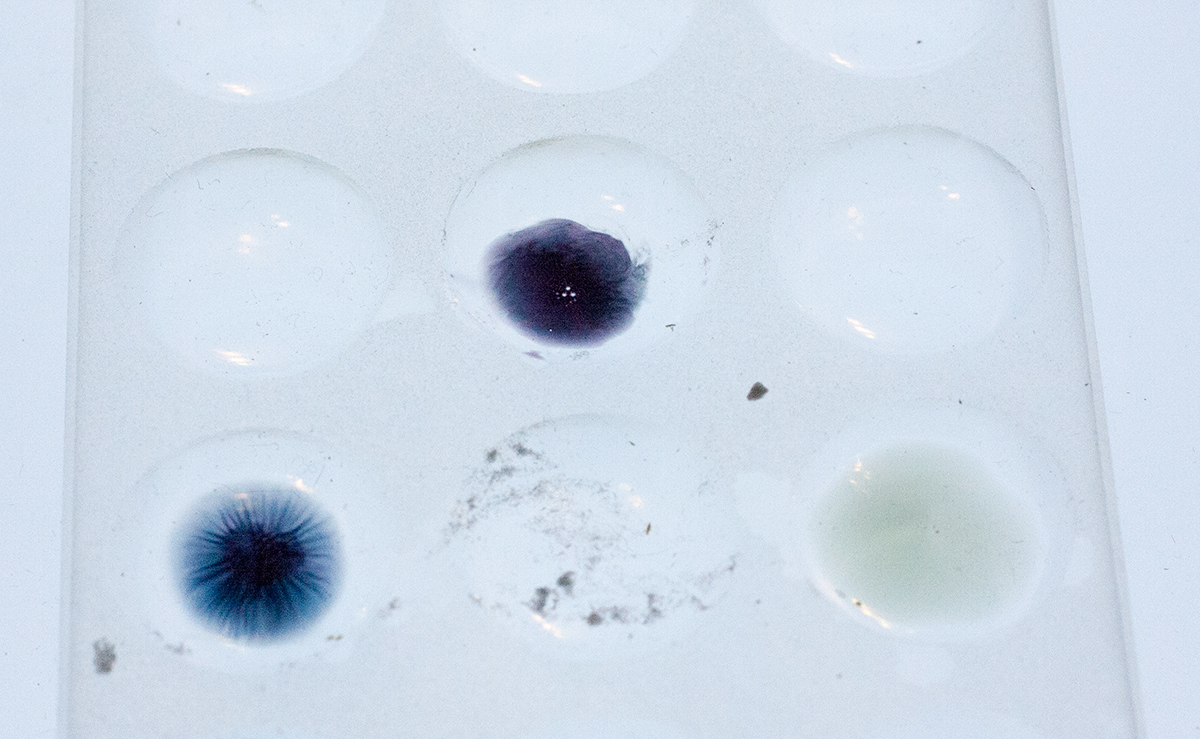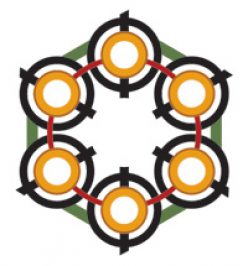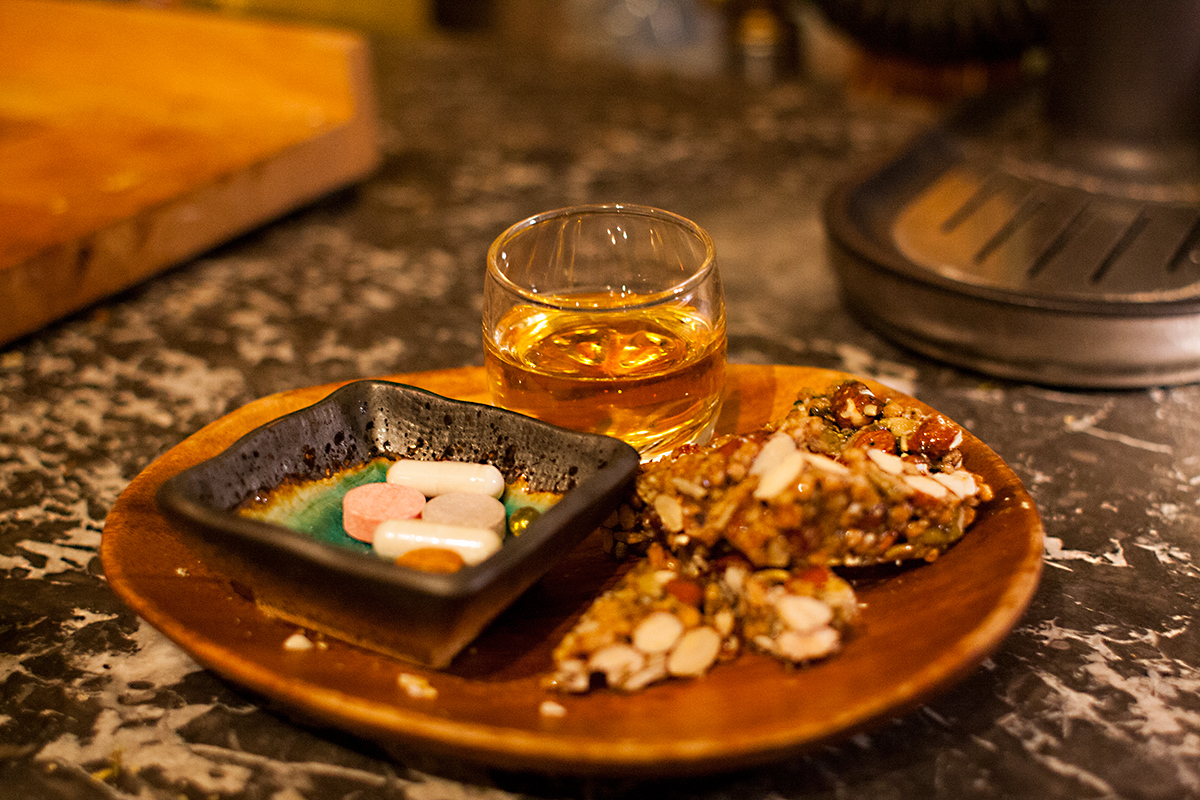We’ve been trying to come up with better ways to do and photograph the spot plate reagent field tests for the variety of chemicals. Both the ones sold as ecstasy/molly and the wide variety of substances and pharmaceuticals that people send in for analysis.
The solid ceramic spot plate we’ve been using for the last 15 years makes it so the colors are hard to see in darker reactions.
So we’ve been hunting down translucent glass plates but haven’t found many. We would like one that we can use AND recommend to Erowid visitors around the world they can buy for a reasonable price.
Here are some photos comparing the translucent spot plate with the opaque one.
Old spot plate:
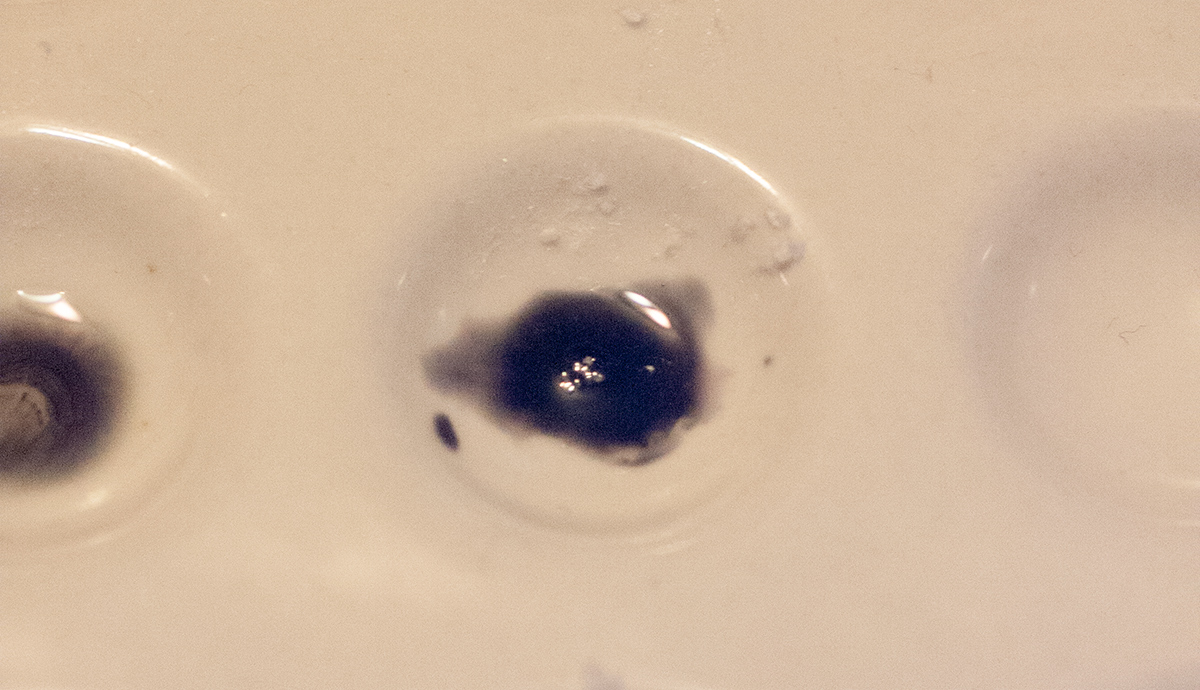
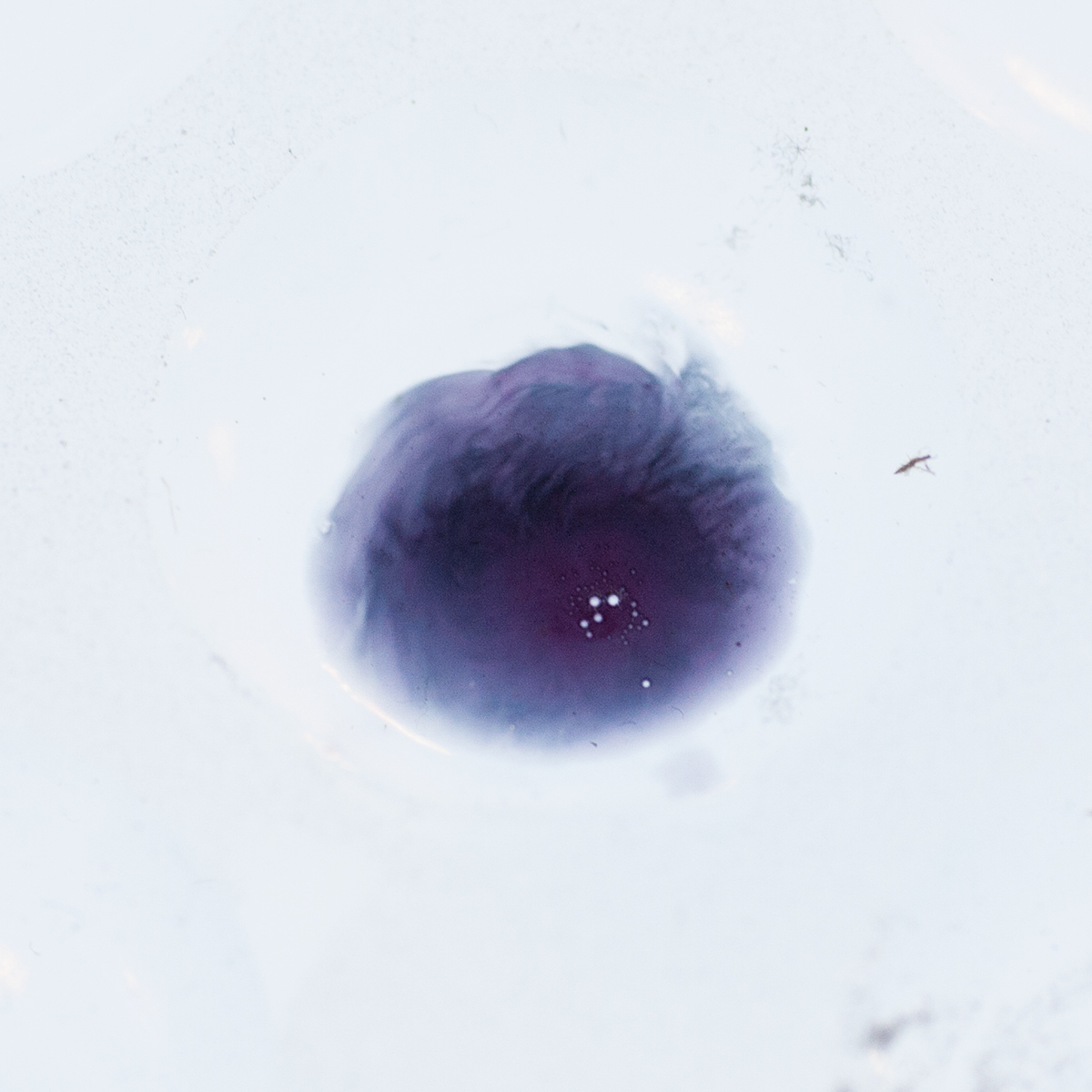
Perhaps the most interesting is that all three of these color spots are Marquis + the same chemical. The right hand spot is the oldest (over an hour since drop), the left one is maybe 30+ minutes, and the top middle one was dropped within a minute. This chemical starts off as a grey purple, to a very dark nice blue purple, then goes to a dark blue, then winds up in this greenish gray color.
